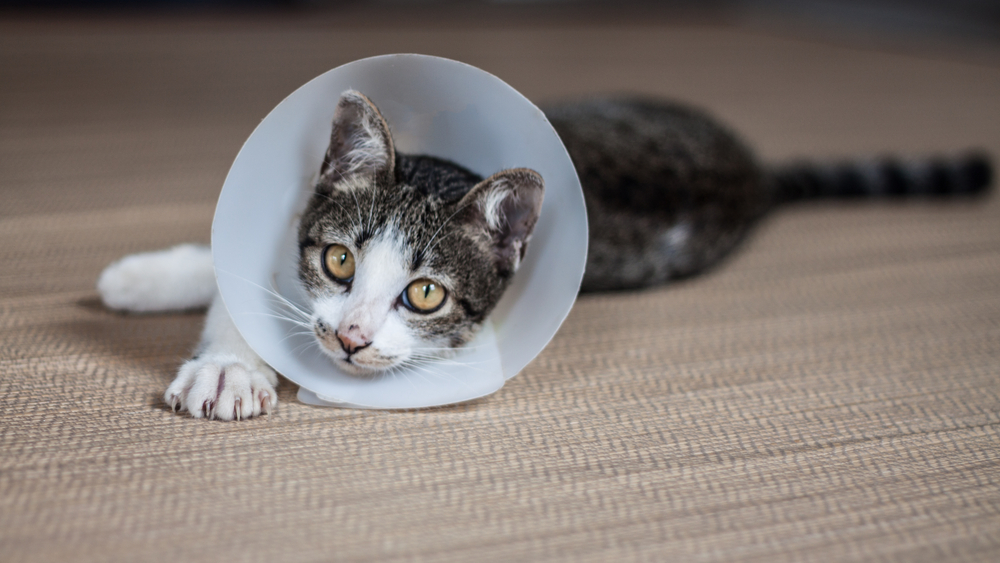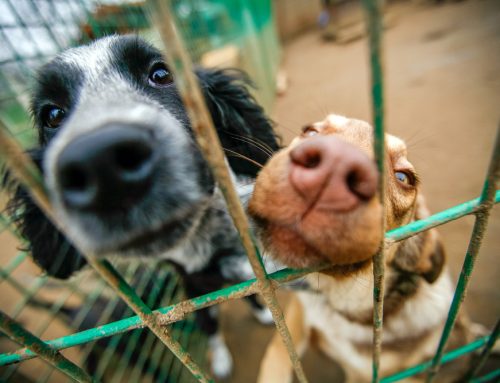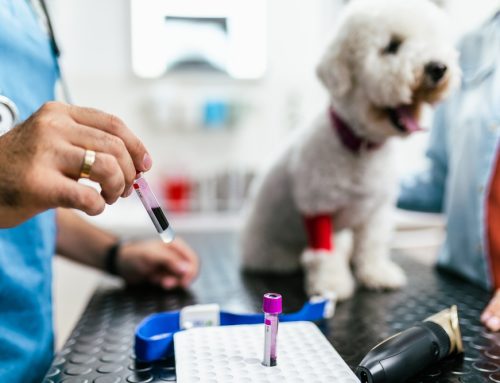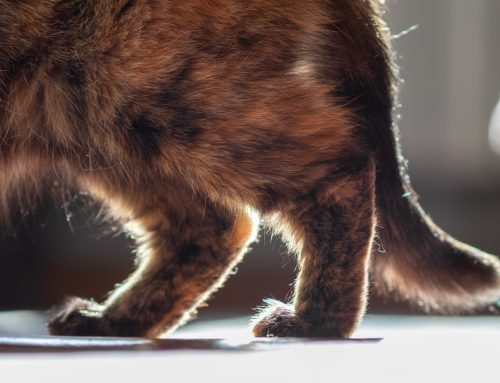Pyometra is a life-threatening uterine infection that can occur with little to no warning signs in unspayed female dogs and cats. The best way to prevent this reproductive health emergency is by having your pet spayed at the Animal Hospital of Stoney Creek. In the meantime, owners of intact female pets should familiarize themselves with this dangerous condition and its warning signs.
Pyometra in pets
The uterus (i.e., womb) is a Y-shaped tubular organ that changes significantly after an unspayed female pet’s heat cycle (i.e., estrus). If the pet does not get pregnant during their heat cycle (i.e., they are not intentionally bred or accidental mating doesn’t occur), the hormones progesterone and estrogen are elevated, and along with natural cervical and uterine functions during and after the heat cycle, they create an ideal environment for bacteria migration and growth.
Pyometra occurs when harmful bacteria enter the uterus, often from the open cervix or a pre-existing urinary tract infection, multiply rapidly, and create a pus-like fluid that fills the uterine horns and body. These bacteria release harmful toxins into the bloodstream, causing serious illness.
Pyometra risk factors for pets
Pyometra technically can occur in any unspayed female dog or cat, but is more common in older adults because with each empty heat cycle (i.e., one in which pregnancy does not occur), the uterine tissue thickens and creates a more hospitable environment for bacteria. The Animal Hospital of Stoney Creek veterinarians strongly recommend spaying breeding female dogs or cats after their final litters.
In rare cases, pyometra can occur in spayed cats and dogs whose uterine horn or body was incompletely removed. Fortunately, this condition is uncommon.
Pyometra signs in pets
Pyometra occurs in two forms, based on an open or closed cervix. Clinical signs and outcomes vary somewhat, depending on the type affecting your pet and their infection and associated inflammation severity. The two types include:
- Closed pyometra — The closed cervix, seals off access from the uterus to the outside, resulting in trapped bacteria that create ever-accumulating pus and force bacterial toxins into the pet’s blood stream. Closed pyometra is a veterinary emergency and requires immediate life-saving surgery.
- Open pyometra — As the name suggests, the cervix stays open, which allows the pus and infected material to drain to the outside, and a visible bloody, white, or milky discharge is created. Although an open pyometra is not as critical as a closed pyometra, affected pets still require urgent and advanced veterinary care.
Pyometra typically occurs two to eight weeks after the pet’s last heat cycle. According to the American College of Veterinary Surgeons (ACVS), the most common pyometra signs include:
- Appetite loss
- Lethargy and depression
- Increased thirst and urination
- Pale gums
- Fever
- Bloody or discolored vaginal discharge
- Gastrointestinal signs (e.g., vomiting, diarrhea, pot-bellied appearance)
Unfortunately, some pets have only a vaginal discharge, so promptly recognizing and addressing an open pyometra can be difficult, while pets with a closed pyometra never show vaginal discharge. The ACVS recommends assuming pyometra as a possible diagnosis for all sick, unspayed female pets.
Pyometra treatment for pets
The recommended pyometra treatment is an ovariohysterectomy or spay surgery. Removing the infected uterus and the ovaries eliminates the infection source and future estrus cycles. Although a typical spay on a healthy pet is considered a routine surgery, a pyometra spay can be a high-risk procedure, because veterinarians must prevent infected fluid from entering the abdominal cavity.
Critical pets must be stabilized prior to surgery, which involves administering intravenous (IV) fluids and antibiotics to reduce or correct infection-related shock (i.e., sepsis). Aggressive therapies must continue post-surgically, and pets may require hospitalization for several days.
Although less desirable, a uterus-sparing treatment is available for breeding animals with open pyometra. This procedure involves medications to expel the uterine contents and clear circulating infection, but does not prevent recurrence.
Pyometra prevention for pets

Spaying your female pet is the best way to prevent them from developing a pyometra. Spaying also provides immense lifelong health benefits, such as:
- Eliminating or greatly reducing mammary (i.e., breast) cancer risk
- Preventing ovarian or uterine cancers
- Preventing unwanted litters
- Eliminating messy heat cycles, false pregnancies, and hormone-related behavior
If you choose to keep your female pet intact, you must take precautions to ensure their health and safety, including:
- Tracking your pet’s heat cycle
- Supervising your pet at all times when they are in heat to prevent accidental breeding
- Staying up-to-date on annual wellness exams and care
- Monitoring your intact female pet for suspicious illness or behavior change that could signal pyometra
Pyometra is a dangerous and potentially deadly infection that many pet owners don’t recognize until their pet needs urgent care or emergency surgery at the Animal Hospital of Stoney Creek. Show your female pet the love and attention they give you by providing them with compassionate, individualized veterinary care. In sickness and health, our dedicated team provides uncompromising care.
Contact us to schedule an in-person visit or a telemedicine consult for non-urgent needs and pet advice.








Leave A Comment